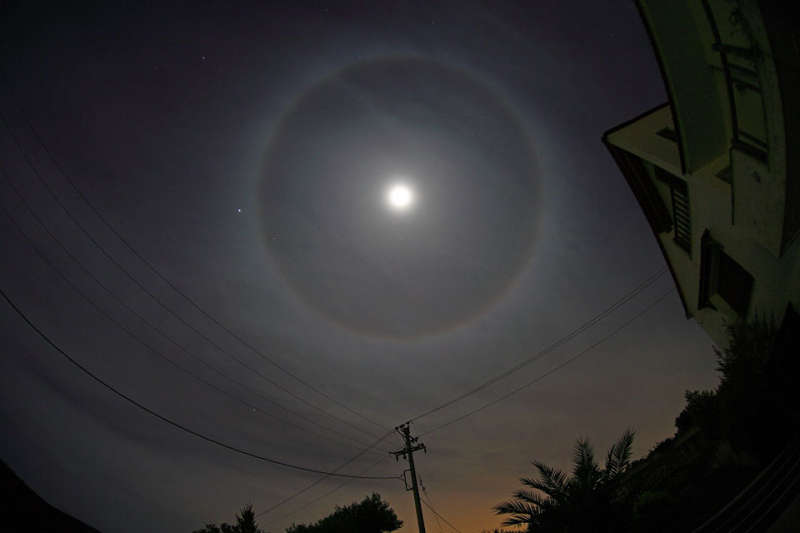
|
Credit & Copyright: Anthony Ayiomamitis
(TWAN)
Explanation:
Have you ever seen a halo around the Moon?
This fairly common sight occurs when high thin clouds containing millions of tiny
ice crystals cover much of the sky.
Each ice crystal acts like a miniature lens.
Because
most
of the crystals have a similar
elongated hexagonal shape,
light entering one crystal face and exiting
through the opposing face refracts 22 degrees,
which corresponds to the radius of the Moon Halo.
A similar
Sun Halo
may be visible during the day.
The setting of the
above picture is
Athens
San Sebastian,
Greece.
The distant planet
Jupiter
appears by chance on the
halo's left.
Exactly
how ice-crystals form
in clouds remains under
investigation.
|
January February March April May June July August September October November December |
| ||||||||||||||||||||||||||||||||||||||||||||||||
NASA Web Site Statements, Warnings, and Disclaimers
NASA Official: Jay Norris. Specific rights apply.
A service of: LHEA at NASA / GSFC
& Michigan Tech. U.
Based on Astronomy Picture
Of the Day
Publications with keywords: halo - Moon - ice crystals
Publications with words: halo - Moon - ice crystals
See also:
